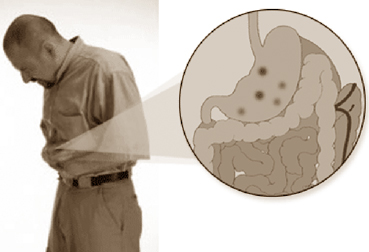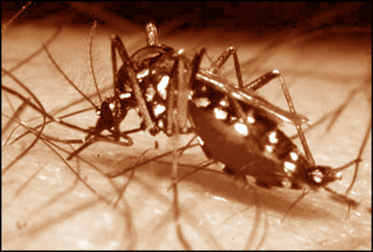|

Two causes of gastritis traced
by Nilma DOLE
 |
 |
| Dr. Karunasena
Nanayakkara |
Dr. Ushan Dalpadado |
"There are various causes for gastritis, which is when there are
wounds or inflammations in the stomach lining (epithelial cells, divided
by type)" said consultant gastrointestinal surgeon, Dr. Karunasena
Nanayakkara of the Kalubowila Teaching Hospital. Mucous cells that
generate mucus is present between the stomach lining and the acids of
the stomach, creating a protective layer. However, there are different
factors to cause inflammations in the stomach that cause gastritis.
"Improper diet, stomach infection and even certain drugs can cause
gastritis which is unbearable for the patient", said the doctor.
The main acute causes are excessive alcohol consumption or prolonged
use of nonsteroidal anti-inflammatory drugs (also known as NSAIDs) such
as aspirin or ibuprofen. Sometimes gastritis develops after major
surgery, traumatic injury, burns, or severe infections. Gastritis may
also occur in those who have had weight loss surgery resulting in the
banding or reconstruction of the digestive tract.
Speaking with him was Dr. Ushan Dalpadado, senior registrar of the
gastro intestinal unit of the hospital who said, "Chronic causes of
gastritis are infection with bacteria, primarily Helicobacter pylori
which are present in contaminated food and can be present from childhood
but remains dormant until adulthood when the immune system is weak".
Helicobacter pylori colonizes the stomach of more than half of the
world's population, and the infection continues to play a key role in
the pathogenesis of a number of gastroduodenal diseases. Certain
diseases such as pernicious anaemia, chronic bile reflux, stress and
certain autoimmune disorders can cause gastritis as well. "The most
common symptom of gastritis is abdominal pain or what people call 'tummy
upset'. Various symptoms occur in individuals like some may have
increased appetite and others may hardly have any" said Dr.Nanayakkara.
Other symptoms include indigestion, abdominal bloating, nausea, heart
burn and vomiting, said the doctor. "The best way to detect the real
cause of gastritis is gastroscopy where an endoscopy is sent through the
stomach to determine the problem", said Dr.Dalpadado.
He further added that often a blood test, a complete blood count
test, or a stool test may be used to diagnose gastritis. Chronic Bile
Reflux occurs when the digestive fluid produced by your liver (bile)
rises up from your small intestine through the pyloric valve into your
stomach, and then from your stomach into your esophagus.
Bile reflux and acid reflux often go hand-in-hand, occurring
together, which is why bile reflux is often overlooked but unlike acid
reflux, bile reflux often causes gastritis. "We advise people to avoid
consuming alcohol and smoking because it harms the lining of the stomach
which can be prolonged in the case of a severe alcoholic", said the
doctor.
Dr.Nanayakkara said, "Most alcoholics presume that a stomach pain is
caused due to a hangover but it is only when they cough blood they
realise that the stomach has been affected due to the severe gastritis".
 Dr.Dalpadado added his views: "Most alcoholics do not have a proper
dietary routine hence they are likely to be affected by it". Dr.Dalpadado added his views: "Most alcoholics do not have a proper
dietary routine hence they are likely to be affected by it".
The best way to avoid gastritis is to take meals to time because
since there are chemicals and gastric acids produced in the stomach,
they need food to maintain an optimum level. "You have to have a good
diet otherwise the PH balance of the stomach will be affected and you
won't have proper nutrition" said Dr. Nanayakkara. Any age group can be
affected by gastritis since the main cause of it is stress. "Stress is a
common factor for many to have gastritis since it is a condition where
you can't really cure because of an individual's lifestyle and
schedule", said the doctor. "In many cases, curing gastritis can be
changing lifestyles and acquiring healthy habits because there should be
discipline", said Dr. Dalpadado. He further added, "Gastritis can affect
anyone from the lower to the upper class because for the lower it would
mean improper diet intake and for the upper class it is the stress of
modern life".
Dr. Nanayakkara said that traditionally, our ancestors adopted a diet
of rice for breakfast, lunch and dinner but back then, there was no fast
food with high fat, sugar and preservatives. Treatment for gastritis
includes taking antacids or other medicines, such as proton pump
inhibitors or antibiotics and for those with pernicious anaemia, B12
injections are given.
"In diet, a balanced diet of vegetables and pulses should be taken
and very spicy foods should not be consumed", said Dr. Nanayakkara.
"Gastritis is a disease that can be promptly cured with the right drugs
and treatment provided the patient adheres to the proper treatment
course", said Dr. Nanayakkara. He further added that the important thing
is to maintain a dietary time-table if you want to prevent the incidence
of gastritis.
What the community should know and could do:
Dengue in Sri Lanka
by Dr. K.D.P.Jayathilaka
Continued from last week
 There are many types of breeding places. Majority of them are known
and few are still elusive to the public eye. Some go to the extent of
showing how to reduce the breeding of mosquitoes by puncturing discarded
tyres or filling them with sand or bailing out water from concrete water
tanks which the people have built for a purpose. I wonder whether these
demonstrations are practical. No doubt, these are very important Aedes
breeding sites. As mentioned in my earlier article last month, only a
person who tries to cut or puncture a discarded tyre will know the
difficulty. The problem is not with toy car tyres, but with those of
buses, trucks, lorries and even cars tyres which need 2 - 3 people to
lift. To fill such a tyre with sand will need 1 - 3 wheel-borrows of
sand which costs about Rs. 500 - 600 these days. After filling the tyre
with sand what are we going to do with it? It is not possible to keep it
as an ornament. Also, we are not speaking of one or two tyres, but some
times of tens, hundreds or even thousands of tyres as in various
depots/workshops and business places. Small plastic cups and coconut
shells could be collected and buried in pits and this is possible in
places where people have large gardens. But, nowadays many people built
houses on small plots of 4 - 6 perches and there is hardly any space to
dig a pit for this purpose and even if it is done and when the pit is
full and covered with sand it becomes the end of their dengue control.
There should be practical and acceptable solutions. To assist the
community in their effort and participation in the dengue control
program, there should be an efficient collection and a disposal
mechanism for the collected garbage. WHO, advises to avoid burning PVC.
material and not all plastic. Actually what happens at the collected
garbage mountains is that they catch fire instantaneously and burn for
days, weeks or even months. The other problem most people face is
collection of rain water in pits either man-made or natural. Most people
(community) are helpless in such a situation. They cannot drain it, fill
it or dry it. However, temporarily they can pour some oil either
kerosene or diesel to the water, but most people in the community has no
idea about it. There are many types of breeding places. Majority of them are known
and few are still elusive to the public eye. Some go to the extent of
showing how to reduce the breeding of mosquitoes by puncturing discarded
tyres or filling them with sand or bailing out water from concrete water
tanks which the people have built for a purpose. I wonder whether these
demonstrations are practical. No doubt, these are very important Aedes
breeding sites. As mentioned in my earlier article last month, only a
person who tries to cut or puncture a discarded tyre will know the
difficulty. The problem is not with toy car tyres, but with those of
buses, trucks, lorries and even cars tyres which need 2 - 3 people to
lift. To fill such a tyre with sand will need 1 - 3 wheel-borrows of
sand which costs about Rs. 500 - 600 these days. After filling the tyre
with sand what are we going to do with it? It is not possible to keep it
as an ornament. Also, we are not speaking of one or two tyres, but some
times of tens, hundreds or even thousands of tyres as in various
depots/workshops and business places. Small plastic cups and coconut
shells could be collected and buried in pits and this is possible in
places where people have large gardens. But, nowadays many people built
houses on small plots of 4 - 6 perches and there is hardly any space to
dig a pit for this purpose and even if it is done and when the pit is
full and covered with sand it becomes the end of their dengue control.
There should be practical and acceptable solutions. To assist the
community in their effort and participation in the dengue control
program, there should be an efficient collection and a disposal
mechanism for the collected garbage. WHO, advises to avoid burning PVC.
material and not all plastic. Actually what happens at the collected
garbage mountains is that they catch fire instantaneously and burn for
days, weeks or even months. The other problem most people face is
collection of rain water in pits either man-made or natural. Most people
(community) are helpless in such a situation. They cannot drain it, fill
it or dry it. However, temporarily they can pour some oil either
kerosene or diesel to the water, but most people in the community has no
idea about it.
For situations like this, the important thing is to get the
information and corporation from the public and provide assistance,
advice and help. Having a special telephone number (like 118, 119 for
emergency) even temporarily and friendly staff to advise and assist the
people who noticed a problem and were responsible enough to notify the
Aedes breeding place. Instead of displaying large expensive posters of
mosquitoes at bus stands and walls it is more useful, meaningful and
cost effective to have this telephone number displayed to notify, in
case the community notices mosquito breeding places which they cannot
handle by themselves. If there are discarded tyres, they could be
collected to a central dumping place for regular larviciding (once in 2
weeks) collection of ground waters could be subjected to either
larviciding (Temephos, B.t.i.) etc., or use biological control methods
(introduce some larvivorous fish like guppies) depending on the duration
it is going to last. On a long-term basis, to handle the discarded tyres,
which is an escalating problem either the Government or a private
entrepreneur could start a recycling plant to produce material for
ground filling and road building.
Dengue control or for that matter control any communicable disease or
a social condition should be a combined effort involving many Government
Ministries, Departments, Voluntary, Religious Organizations and the
Community where all possible control strategies are applied.
Different Methods for Mosquito (Aedes) control
These are some of more practical and community acceptable methods of
source reduction for Aedes control.
* Collection and proper disposal of containers which are temporary
collections of water where the mosquitoes could breed. (Garbage
disposal).
* Provide information regarding large breeding sites such as
discarded tyre collections, man made or natural water collections (at
building sites, road construction etc.)
* Removal or reduction of temporary resting places of the mosquito
(brush and the bush) where possible close to human habitation. This will
reduce the longevity of the mosquito.
* If the collection of water is going to last for a long time e.g.
months introduce some larvivorous fish like guppy to that place
(Biological control). If it is a drain with some place broken for water
to stagnate get it repaired and if there are blocks or growing weeds,
get them cleared to allow the water to flow freely.
* For semi permanent breeding places or even drinking water storage
tanks larvicides such as Temephos or B.t.i. (a biologically produced
insecticide) could be applied at regular intervals of 12 - 14 days. * If
there are bird baths, flower vases, or other receptacles containing
water kept as ornaments change the water at least once a week to prevent
Aedes mosquito breeding. Scrub and clean the sides of the container each
time (to prevent the eggs clinging) before refilling.
* Salt, oil, or a low toxic insecticide could be added to ant-traps
and such devices in houses to prevent breeding of Aedes mosquitoes. Roof
gutters which are blocked and retaining water could be cleaned.
* House plants such as bromeliads which people grow with love and
care are believed to collect water in leaf sheaths. However, it is not
such a big problem in causing an epidemic or producing large amounts of
dengue mosquitoes compared to other breeding places like discarded tyres.
If there is any doubt some Temephos or Fenithion could be added to the
water once a fortnight.
Biological control
This involves the introduction or maintenance of natural predators
such as parasites, bacteria, predatory animals, fish, insects etc. in
the environment where mosquitoes could breed or rest after becoming
adults. The effective use of these agents requires a good understanding
of the mosquito breeding/resting places and the local environmental
conditions. Such methods may be most effective when used in combination
with others. The popular and commonly employed biological control method
against mosquito larvae in large permanent or semi-permanent water
collection is to introduce few larvivorous fish like guppy (Poe cilia
reticulate) This fish could be introduced even into water collection
tanks used for drinking water. A single guppy could eat 50 - 60 mosquito
larvae in one hour and could survive in even in slightly polluted water.
This fish is available in the country and usually reared in fish tanks
as an ornamental fish. Some time ago (20 - 30 years) this fish was
freely available in the drains of Colombo and many suburbs, but now we
hardly see them growing naturally. Many animals like frogs, toads,
house-geckoes small lizards, small bats, spiders and other predatory
insects consume large numbers of mosquitoes which rest in the bush
outside and inside houses. Indiscriminate use of insecticides by way of
spraying or fogging either for agriculture or other purposes will
destroy those animals and friendly predatory insects to upset a long
lasting natural control mechanism.
Larvicides
Larvicides are applied to mosquito breeding sites to kill the larvae.
Some larvicides like oils act as suffocators whilst others act as
contact poisons or stomach poisons to the larvae. Larvicides are used on
breeding sites that cannot be drained or filled or in places where
introduction of larvivorous fish is not possible.
Suffocators -: Any type of oil either kerosene, diesel, cooking oil
or specially prepared commercial oil with added detergent to increases
the spreading action are useful in treating small confined areas. The
oil forms a thin film on the surface of water and prevents the mosquito
larva from taking air from the surface of the water. When properly used,
the lighter oils are non toxic to fish, birds, mammals and other
non-target organisms. The oil can be applied simply by dripping from a
can or a bottle. However, the application has to be repeated after a few
days as the oil tends to adhere to the sides of the pond or the pit and
the vegetation growing in water or floating debris.
Organophosphorus compounds -: Many chemical compounds to be used as
larvicides are available in the market. However, the safe and not so
expensive ones Temephos (Abate) and Fenthion, are available in
emulsifiable concentrate (EC) granules and as briquettes. This method is
suitable for small areas of water and Temephos had been in use for a
very long time and is safe even with drinking water. It is least toxic
to fish, birds, mammals and other non target organisms when used in
correct concentrations. Could be used for spraying tyre dumps and other
such semi permanent / permanent places where water collects to breed
Aedes mosquitoes. Fenthion is more toxic to humans and other non target
organisms. It is more suitable for polluted water such as ditches,
septic tanks, and other mosquito breeding sites. The application of both
larvicides has to be repeated every 10 - 14 day interval.
Bacterial larvicides -: B.t.i or B.t. H-14. -: Bacillus thuringiencis
israeliensis or Bacillus thuringiencis H-14 is a soil bacterium which
produces a toxin which is a stomach poison to mosquito larva. The
product available as B.t.i. or B.t. H-14 contains mainly dead bacteria,
living spores and toxin crystals in the spores which do not multiply. It
is a biologically produced insecticide which is a stomach poison to
mosquito larvae. At normal dosage it is harmless to other insects, fish,
higher animals and humans.
It could be applied even to drinking water. Available as a liquid,
wettable powder, granules and briquettes which release the bacterial
spores containing the toxin. The mosquito larvae have to ingest the
spores for the toxin to act in the stomach and killing them. B.t.i. is
only effective against the actively feeding larva and has no effect on
the eggs, non-feeding pupa and the adult mosquito.
It breaks down on exposure with the environment. B.t.i. may remain
active from 24 hours to about 30 days depending on environmental
conditions and require reapplication. Average period for reapplication
is 12 - 14 days. Suitable for confined water collections indoors and out
doors end even for house plants which collect water in their leaf
sheaths. Also it is useful for spraying tyre dumps which are major
breeding grounds for Aedes mosquitoes. B.t.i. has the same operational
problems as any other larvicide and it is not very effective in polluted
water. The product may be more expensive than other chemical larvicides.
Insecticide Spraying -: Thermal fogging or ULV space spraying is an
emergency measure used in a crisis situation and should not be
considered a routine dengue control measure. However, if it is done in
an emergency situation, the procedure should be repeated at 5 to 6 day
interval in the same area till the other more important community based
activities are improved. But, rarely do we see that happening. Sometimes
it is detrimental to a control Programme because it gives a false sense
of security and a sense of dependency to the community resulting in
their neglecting the more important day to day activities which should
be carried out to reduce mosquito densities.
Another disadvantage is that it kills all predatory insects which
feed on mosquitoes in the bush. Thermal fog or ULV spray affects only
the flying insects (mosquitoes) and is very short lasting.
Another generation of mosquitoes will come out of the breeding places
after a few hours and can get blood from dengue patients, if there are
any in the community. When thermal fogging is done it is useful to
direct the fog or smoke inside houses and out-houses too, as many
mosquitoes will be resting in those places.
However, thermal fogging and motorized truck mounted ULV spraying is
a high profile activity, often regarded as a means by which political
leaders can be seen to be taking action to address the problems of
diseases transmission.
Environment modification and manipulation -: Reduction of Aedes
breeding in large collections of water either temporary or permanent
could be done either by draining or filling them or by putting them in
to some other useful purpose. Sometimes the areas are extensive and will
need the involvement of the whole locality through a 'sramadana'
campaign. May even need the use of heavy machinery and the involvement
of Government Ministries.
Next week Personal and family protection
World's first human life respecting Association from Sri Lanka
by Edward ARAMBEWALA
World's first human life respecting Association for the study and
welfare of Centenarians (those who are over 100 years) was formed last
week in Colombo.
The meeting of the organising committee, which adopted the
constitution of the Association was chaired by Prof. Colvin Goonaratna (MBBS,
FRCP, FRCPE, FCCP, PhD) of the Colombo Medical Faculty, who was
unanimously elected President of the Association.
Prof. Goonaratna, in his welcome address at the meeting which was
held at the Sri Lanka Medical Association's (SLMA) Wijerama House, board
room at No. 6 Wijerama Mawatha, Colombo 7 said, "The idea of starting an
association for the welfare of Centenarians, thus respecting human life
came out as a result of the Centenarian study that was conceived by
Senior Journalist Edward Arambewala from Lake House who is handling the
HealthWatch Medical page in the "Daily News".
The name of this Association shall be the Sri Lanka Association for
the Welfare of Centenarians, hereinafter referred to as "the
Association". The Vision of the Association shall be to become the most
influential organisation dedicated to the welfare of centenarians in Sri
Lanka.
The Mission of the Association shall be to encourage, support and
sustain activities that promote the welfare of centenarians, including
ethically and culturally acceptable research. The Emblem of the
Association shall be the unique orchid flower of Vanda 100 a specially
cultured for the Association in the year 2002 by the Preradeniya
Botanical Gardens.
Principal objectives
Section 1. The principal objectives of the Association shall be:
(1) To cherish centenarians as an enduring symbol of inviolable
fundamental human rights, and the inalienable sanctity of human life.
(2) To promote the welfare of centenarians in regard to
accommodation, nutrition, health, social and cultural engagement.
(3) To establish links and collaborate with similar associations and
institutions worldwide, that promote the welfare of centenarians.
(4) To encourage non-invasive, and ethically and culturally
appropriate research into the life and functioning of centenarians. |

